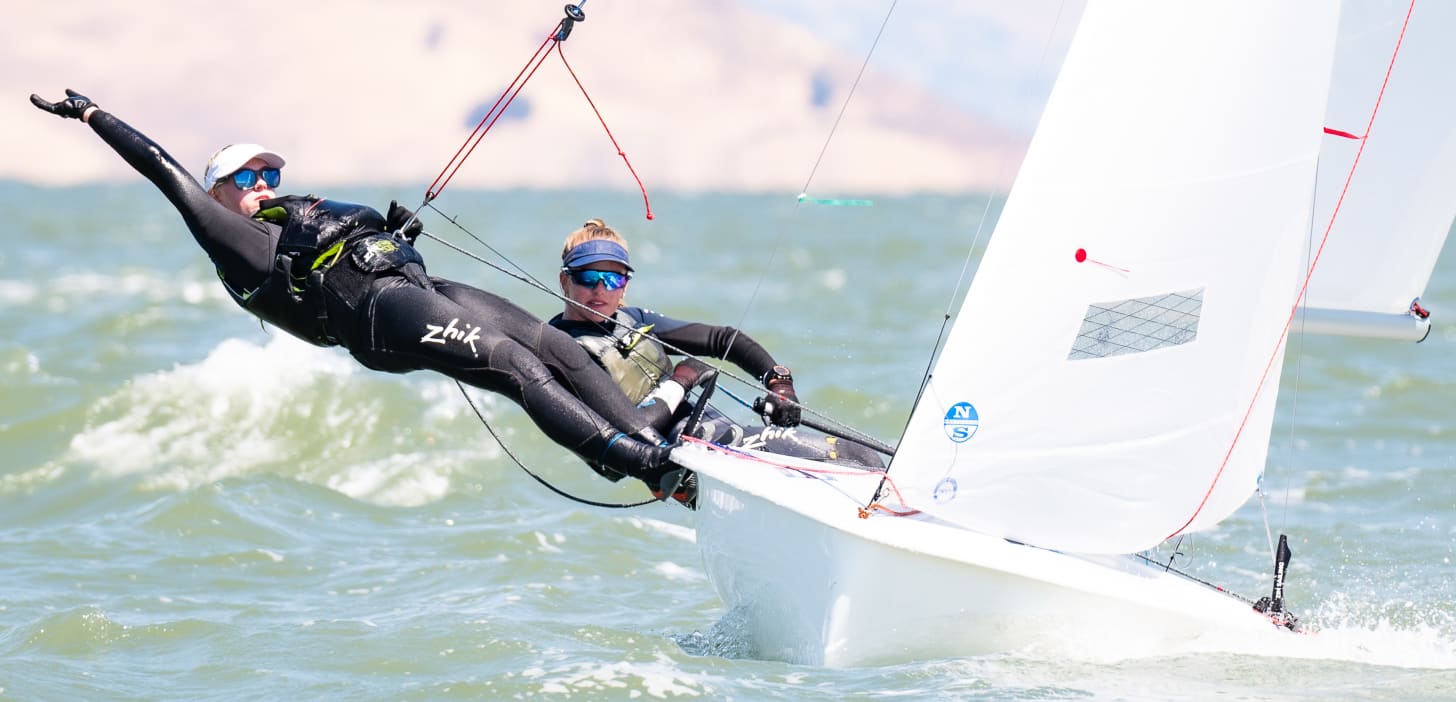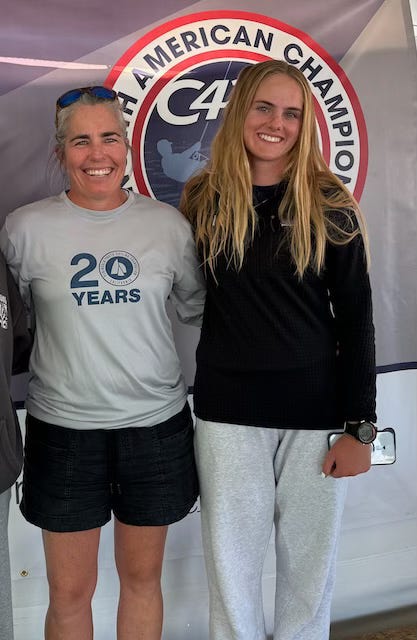C420 Women's North American Championships
With limited C420 experience, we achieved two top-10 finishes at the C420 Women's North American Championships.

My sailing coach, emphasizes that single-handed sailing provides an on-ramp to top-level doublehanded sailing and beyond. He likes my two-sport athletic schedule in water polo. Could solid doublehanded sailors succeed in the 420 with little prior experience? I decided to test this theory out in a big way.
College sailors tell me that the collegiate sailing rules fit well with how the ILCA dinghy should be competitively sailed. You can be vastly more physical and aggressive in an ILCA on tacks and gybes, coming out of these maneuvers with more speed.
As a single-handed female sailor, I work to leverage the physicality of my water polo training to try and match the male ICLA sailors. I believed this would translate to better boat handling in the C420 and an ability to be much more competitive on the starting line and use aggressive tacks and gybes pre-start to get solid starting positions. I have trained to be “water polo tough,” which is a take no prisoners style where you aim to sink your opponent and steal their possession of the ball. Could all of this come together for me in a major C420 regatta? I was about to find out.
In July 2024, I decided to jump into a C420 with my crew and sail the Women’s North Americans held at Westpoint Harbor, Redwood City on San Francisco Bay - with no prior C420 regatta experience.
Before this decision, my water polo team finished in Spring, 2024 as Division 1 CIF champions. After a break from the water polo season, I traveled to Slovenia for the ILCA4 Youth Worlds in Izola, Slovenia. The Worlds were held in mostly heavy on the Gulf of Venice with chop and current.
A few weeks after I arrived home, I was preparing for the ILCA4 Worlds in Portugal when I got a text from a sailing friend who wanted me to helm at the C420 Women’s North Americans. With little time to prepare, I didn’t hesitate. We made our plans.
My high school double-handed sailing and ILCA sailing gave me the confidence to try the C420. What I learned is that my foundation in single-handed sailing worked well in this double-handed event.
On our practice days in the C420, San Francisco Bay was expectedly choppy, with wind speeds up to 18 knots and the usual heavy current. My experience sailing on the city front in San Francisco and in Europe helped prepare me for those conditions.
Aggressive maneuvers on the race course helped, and I was pleased with our results: We nailed our starts and had two top finishes. We were incorrectly black-flagged in one race where we finished fith, and in another race finished sixth, but with no prior C420 sailing experience and no practice days I was pleased with the outcome. We were strong on our starts and weather work, competitive downwind, and needed to improve on the reaches.
This is not to say that perfecting my C420 sailing is done—that’s just a start. But I was pleased that my cross-training in two sports and single-handed sailing was beneficial.
Thank you to Molly O’Bryan Vandemoer and the Peninsula Youth Sailing Foundation (PYSF) for hosting a great event.

.


